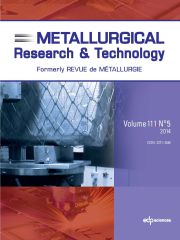No CrossRef data available.
Article contents
Improvement and control of the normal fume flow rate in aluminium smelting factory
Published online by Cambridge University Press: 02 February 2012
Abstract
The collection efficiency is the major indicator for the evaluation of the pollution rate and the environmental performance of the aluminium electrolysis process. This efficiency is proportional to the flow rate of the released gases at the chimney. Since December 2009, the normal flow rate has being decreasing and fluctuating in the Alucam smelting factory. At the Analysis step of the DMAIC methodology, the fundamental causes of the variations and the decrease in the gas normal fume flow rate were identified in a previous study. We intend here to stabilize the flow rate, to Improve the efficiency and to put into place a reliable mechanism of Control in order to maintain target variables within Six Sigma limits. Therefore, we propose an appropriate model of the pipeline network which permits us to identify the causes of the process low capability by excluding the interpretation controversy of the relation between the stopping of pots and the decrease in the fume collection and treatment installation. Then, we choose to achieve the modulation of the suction fan to adapt to changes in system load, and the replacement of the fan impeller to reach the continuous regulation of the flow rate. Benefits cannot be over emphasized because the company may improve on its collection and treatment efficiency, hence an effective reduction of dangerous gaseous fluoride emissions.
Keywords
Information
- Type
- Research Article
- Information
- Copyright
- © EDP Sciences 2012

